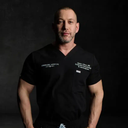Thank you for your question. I understand you’re 20-years-old and dealing with hair thinning since you were 18. You’re concerned you may have male pattern hair loss. You’ve submitted a lot of photos, which is really helpful, and you’d like to learn more about the effectiveness of platelet-rich plasma for treating hair loss.I can give you some guidance on this matter, as I’ve been performing hair transplant surgery for over 20 years. I’m the founder of TrichoStem™ Hair Regeneration Centers, which offers a non-surgical alternative treatment for hair loss which makes use of platelet-rich plasma. I’m also a Board-certified cosmetic surgeon and have a lot of experience using platelet-rich plasma for skin rejuvenation, scar treatment, and wound healing.Before I share my experiences, let me say that I do not, in any way, intend to disparage any other doctor who is using platelet-rich plasma for treatment of hair loss. It’s important to keep in mind that as physicians, we do the best we can based on the information we have and experiences we’ve gained over years of training and treating patients, and ultimately, there is no such thing as “cookbook medicine”.Platelet-rich plasma was first used by oral surgeons in order to improve healing for dental implants, and then used further in orthopedic surgery. Today, it is also used in cosmetic medicine to treat everything from dark under eye circles, skin texture and quality improvement, acne scars, and scar revision.With regard to hair loss, platelet-rich plasma is used effectively alongside hair transplant surgery to improve the healing process and viability of hair grafts. We have learned that it can stimulate short term hair growth, but alone cannot stop hair loss progression. Hair loss is caused by genetic factors in both men and women about 95% of the time, wherein hair follicles are naturally programmed to stop growing after a certain point. There is also hair loss caused by the presence of dihydrotestosterone (DHT), which finasteride is used to treat.In our practice, we began combining platelet-rich plasma with extracellular matrix, which is a wound-healing material intended to improve hair graft survival and donor area healing, in a treatment called TrichoStem™ Hair Regeneration. Upon using the combination, it was discovered that it could thicken existing thinning hair and actually reverse the progression of hair loss. Since then, we’ve developed a customized procedure based on method of delivery, dosing, and appropriate treatment timing that will give optimum results. Most often, people only need one injection to see significant results, which is in sharp contrast to the monthly platelet-rich plasma treatments that are offered elsewhere. In fact, there have been patients who came to us feeling frustrated over their disappointing results, even after having underwent platelet-rich plasma treatments for years.From my experience, platelet-rich plasma can stimulate short term growth of very fine hairs, and can prolong the growth cycle of thinning hair. TrichoStem™ Hair Regeneration, on the other hand, can stop hair loss progression. Many of our patients have reported that their hair has stopped shedding, that their hair feels stronger, and photos alone can testify to the improvement of hair density. In fact, the results are often so dramatic that it can actually exceed the results of two hair transplants.I recommend you learn more about your options. You’re still quite young and have a few options you can consider. Meet with experienced and qualified doctors to get a better idea of what is best for you. Ultimately, I would suggest for you not to opt for platelet-rich plasma treatment alone, because you may be able to prolong the growth cycle of hair, but you will not be able to stop the progression.I hope that was helpful and I wish you the best of luck!This personalized video answer to your question is posted on RealSelf and on YouTube. To provide you with a personal and expert response, we use the image(s) you submitted on RealSelf in the video, but with respect to your privacy, we only show the body feature in question so you are not personally identifiable. If you prefer not to have your video question visible on YouTube, please contact us.







